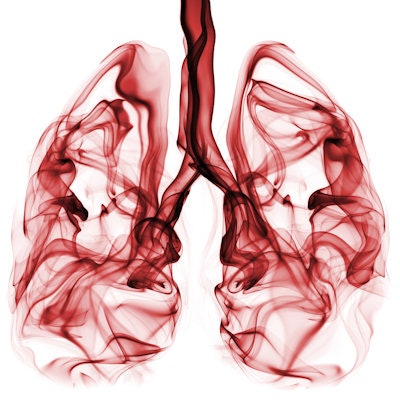
A large-scale CT lung screening program in China detected a higher proportion of early-stage lung cancers than did comparable trials in the U.S. and Europe, even for a population that included relatively young, nonsmoking adults, according to an article recently published online in Academic Radiology.
Major CT lung cancer screening trials, including the National Lung Screening Trial (NLST) and the Dutch-Belgian Randomized Lung Cancer Screening (NELSON) trial, have used older age and smoking history as key risk factors in identifying high-risk individuals who might benefit from screening.
However, the eligibility criteria of those trials may not necessarily be suitable for screening in predominantly Asian populations, noted lead author Dr. Li Fan from Shanghai Changzheng Hospital and colleagues. Recent studies have shown that lung cancer morbidity is on the rise in China, even among those as young as 35 years old without a smoking history.
Acknowledging this information, Fan and colleagues set up a CT lung screening program for Shanghai residents who were at least 35 years old, were not pregnant, and did not have metallic stents. Between September 2014 and September 2016, 14,506 individuals underwent CT lung cancer screening at one of seven hospitals in the city (Acad Radiol, December 14, 2018).
Unlike most lung screening services, this trial did not establish a cutoff size below which pulmonary nodules would not be followed up. Rather, the group considered the presence of a nodule of any size and density a positive result.
After reviewing the CT scans, thoracic radiologists detected lung nodules in 4,336 individuals (29.9%) and confirmed lung cancer in 178 (1.23%) through surgery or biopsy. Approximately 80% of the lung cancers turned out to be stage I.
At 1.23%, the lung cancer detection rate in the current study was lower than in the NLST and NELSON trial, although the proportion of stage I lung cancers detected was noticeably greater.
| International comparison of large-scale CT lung cancer screening trials | |||
| NLST | NELSON | China | |
| Lung cancer detection rate | 2.4% | 2.6% | 1.23% |
| Stage I lung cancer detection rate | 0.44% | 0.61% | 0.97% |
| Proportion of stage I lung cancers | 58% | 63.97% | 81.09% |
| Nodule cutoff size for positive screen | ≥ 4 mm | ≥ 9.8 mm (500 mm3) | All sizes |
The relatively low cancer detection rate was likely a result of the current study's considerably more inclusive eligibility criteria, Fan and colleagues noted. Unified criteria for high-risk individuals have yet to be established in China.
Additional analyses revealed that the distribution of nodule type was approximately 62% solid, 18% nonsolid, 16% calcified, and 4% part-solid. Roughly 75% of all detected nodules were smaller than 5 mm in size, but nearly all of the cancerous ones were larger than 5 mm.
Using 5 mm as the cutoff size would have increased the proportion of actual lung cancer among all nodules to 15.7% from 3.48%, the authors wrote.
"Therefore, by setting 5 mm as [the] positive threshold, the proportion of lung cancer in the positive nodules would be increased, the [need for a] follow-up CT scan would be reduced, and the screening benefit would be improved," they wrote.




















